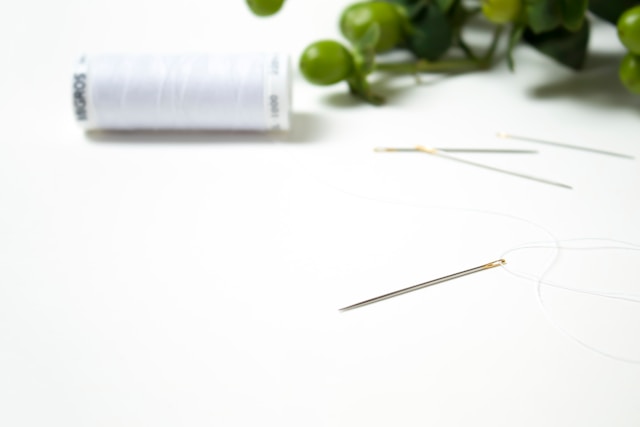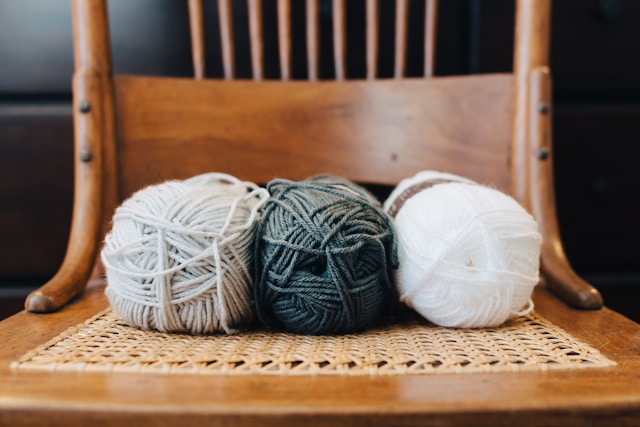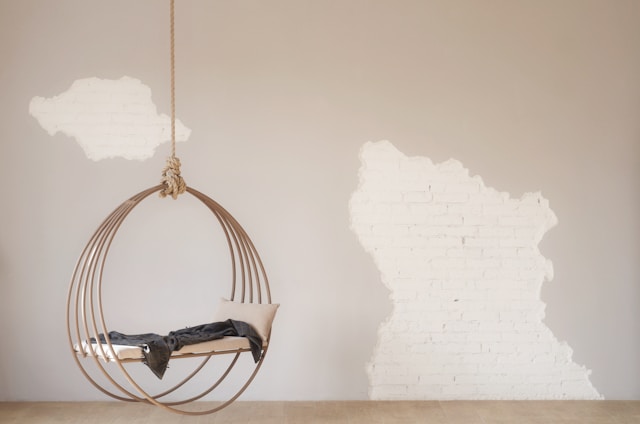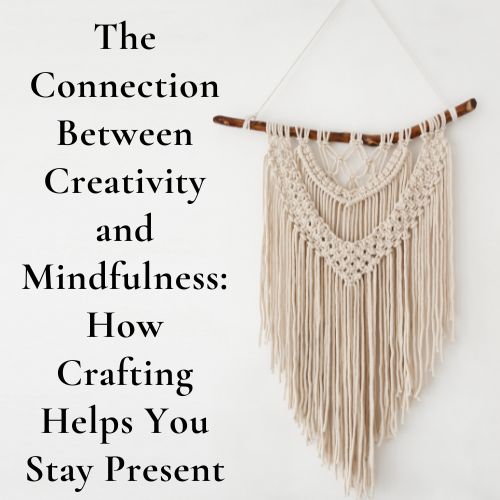I’ve never been great at traditional meditation. Sitting in silence, trying to quiet my thoughts—it always felt like I was doing it wrong. My mind would wander, my body would fidget, and instead of feeling calm, I’d feel frustrated.
But then I realized something: I already had a mindfulness practice—I just didn’t call it that.
Every time I picked up my yarn, thread, or fabric and lost myself in the rhythm of making, I was meditating.
The repetition of stitches, the feel of the fiber in my hands, the steady focus on a pattern—this was my way of being present, of calming my mind, of grounding myself in the moment.
If you’ve ever struggled with mindfulness, or if you’ve ever wished for a way to feel more present without forcing stillness, crafting might be exactly what you need.
Let’s explore how fiber arts can be a powerful mindfulness practice, what the science says, and how to use creativity as a tool for calm, focus, and presence.
Explore this in more depth by joining my Craft to Heal workshop.

The Science: Why Crafting is a Mindfulness Practice
Mindfulness is simply the act of being fully present—bringing your attention to the here and now, without judgment.
Crafting naturally supports mindfulness because it:
🧠 Engages the Brain in a State of Flow
When we craft, we enter a flow state, a mental space where we’re completely absorbed in what we’re doing.
✔ Studies show that people in a flow state experience lower stress levels, greater emotional resilience, and improved focus.
✔ Creativity activates the same brain regions as meditation, promoting relaxation and mental clarity.
🪡 Uses Repetitive Motion to Calm the Nervous System
The repetitive movements in knitting, crochet, embroidery, and other fiber arts activate the parasympathetic nervous system, which helps the body shift out of stress mode and into a relaxed state.
✔ Research shows that rhythmic, repetitive movements have a meditative effect, reducing symptoms of anxiety and even lowering heart rate.
✔ Many people report that knitting or stitching feels like a form of moving meditation, providing the same benefits as breathwork or guided relaxation.
🧵 Encourages Focus and Presence
One of the biggest challenges in mindfulness is keeping the mind from wandering—but crafting provides a natural focal point.
✔ Unlike passive activities (like scrolling on your phone), crafting requires active engagement, making it easier to stay present.
✔ The tactile experience of working with fiber helps ground the mind in physical sensation, pulling focus away from anxious or racing thoughts.
In short? Crafting is mindfulness in motion.

How to Use Crafting as a Mindfulness Practice
If you want to bring more presence and calm into your creative time, here are a few ways to turn crafting into a meditative practice.
1. Focus on One Sense at a Time
The easiest way to practice mindfulness while crafting is to bring attention to your senses.
✔ Touch: Notice the feel of the yarn or fabric in your hands. Is it soft, textured, cool, warm?
✔ Sight: Observe the colors, the patterns forming, the way the light hits your work.
✔ Sound: Listen to the soft clicks of knitting needles, the pull of thread, the quiet rhythm of your hands.
✔ Breath: Sync your breath with your stitching, allowing each inhale and exhale to flow naturally.
📌 Try This: Choose one sense to focus on for a few minutes as you craft. If your mind starts to wander, gently bring it back to the present moment through sensation.
2. Let Go of the Outcome—Focus on the Process
Mindfulness is about being in the moment, not rushing toward an end goal. If you tend to focus on finishing a project, try shifting your attention to simply experiencing the process.
✔ Work on a project without a deadline or purpose—just for the joy of making.
✔ If you catch yourself feeling impatient or frustrated, pause and take a deep breath before continuing.
✔ Remind yourself: “The act of creating is enough.”
📌 Try This: Dedicate one session to crafting without any expectations—no pattern, no pressure, just pure play.
3. Create a Mindful Crafting Ritual
Small rituals help signal to the brain that it’s time to slow down and be present.
✔ Light a candle or make a cup of tea before you begin.
✔ Take a few deep breaths before picking up your work.
✔ Set an intention, like “I am here in this moment” or “I am creating with ease and joy.”
📌 Try This: Before you start crafting, pause for just 30 seconds, take a deep breath, and notice how you feel.
4. Use Crafting as a Daily Mindfulness Break
Even just 5–10 minutes of crafting a day can help reset your nervous system and provide a moment of calm.
✔ If you feel overwhelmed, take a break to stitch, knit, or crochet for a few minutes.
✔ Use crafting as a transition between activities—a way to unwind after work or before bed.
✔ Carry a small portable project (like embroidery or a simple knitting square) for moments when you need a mental reset.
📌 Try This: Set a timer for 10 minutes and craft mindfully—no distractions, just you and your materials. See how you feel afterward.
Explore This Deeper in Craft to Heal
If you love the idea of using crafting as a mindfulness tool, Craft to Heal was designed for you.
In our March 18th workshop, we’ll explore:
🧵 The neuroscience behind crafting and mindfulness
🪡 Guided exercises to help you stay present while making
🧶 How to develop a mindful crafting routine that fits into your life
If you’ve ever wanted to make your creative time feel more intentional, restorative, and grounding, I’d love to have you join us.
🧵 Click here to learn more about Craft to Heal.

Crafting as Meditation
You don’t have to sit in silence to practice mindfulness.
You don’t have to clear your mind or force stillness.
You just have to pick up your materials, start stitching, and let yourself be fully in the moment.
Because mindfulness isn’t about doing nothing—it’s about being present in whatever you’re doing.
And if crafting is what brings you into the now, then your creativity is already your meditation.
So make. Stitch. Breathe. Be here. That’s all you need.
